Idea by
María José Landeta
https://www.instagram.com/cityclimbers/?hl=en
Call for ideas 2019
The City Climbers
The City Climbers

- Systemic changes
The proposal is to design a tool, that combined with a plant database of climbers, will create vegetal structures for the city environment. Starting from a location input, the tool will select the most adequate species for the climate conditions based in an environmental analysis of the site, design the supportive structure based on the growing needs of the plants, and make a sunlight analysis of the selected wall. The City Climbers project was born from the awareness of urbanization and its impact on the future landscape of human settlement. Understanding that urbanization is driven by the search of opportunities can imply itself the opportunity to link a latent community that is looking for better living conditions. The idea of a tool that can help the will of improve our city scenario, with a human scale approach and by taking advantages of the benefits of urban vegetation. The tool provides a parametrical design procedure for a yet limited vegetal solution: Green Walls.
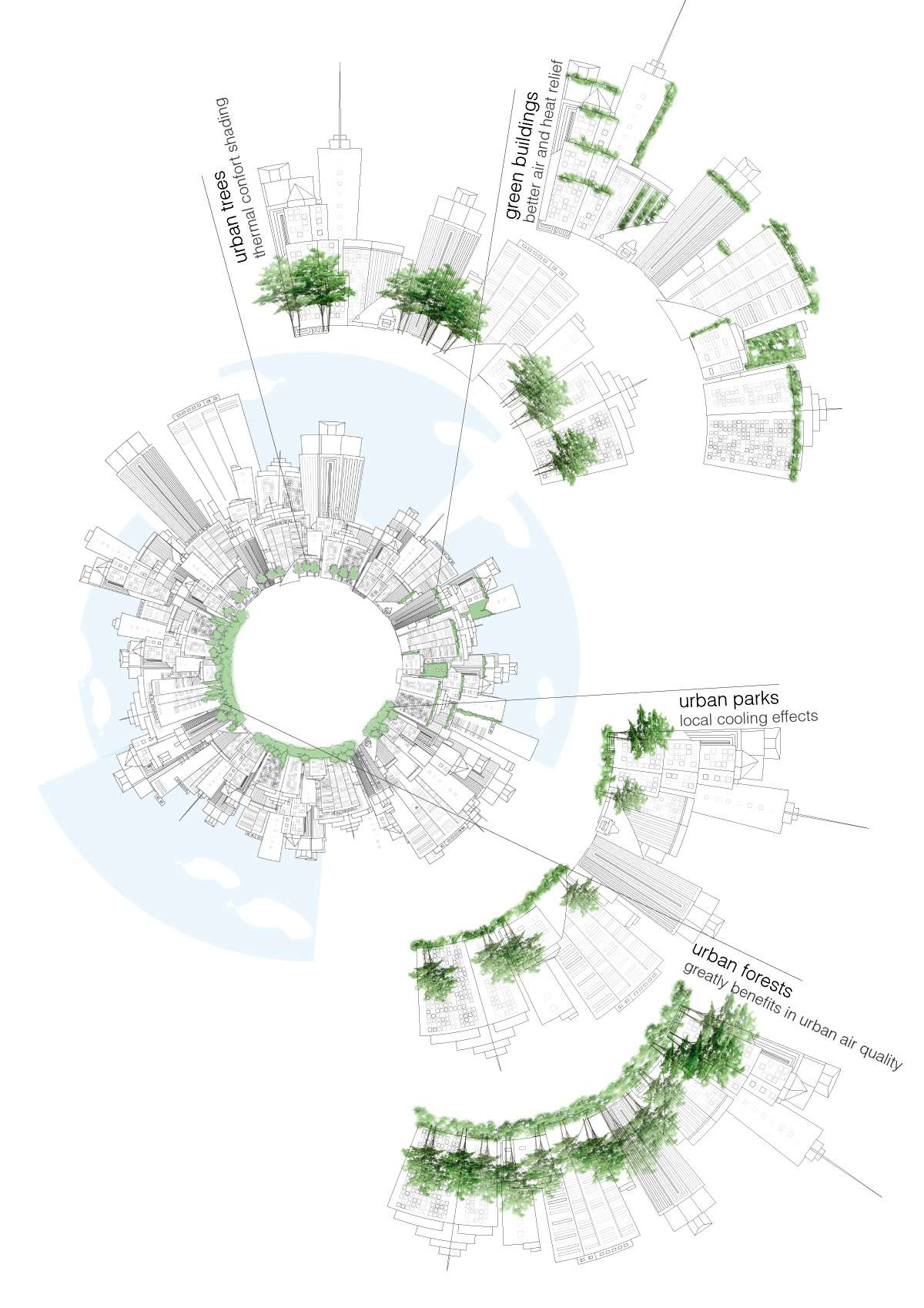
Vegetation is deliberately planted in residential and non-residential urban locations for aesthetic, ecological, and functional purposes. This vegetation can provide values such as screening of unsightly vistas, the abatement of noise, and the shading of city streets. Indirectly, planted city vegetation may provide habitat for urban biodiversity and sequestrate urban atmospheric pollutants, including carbon.
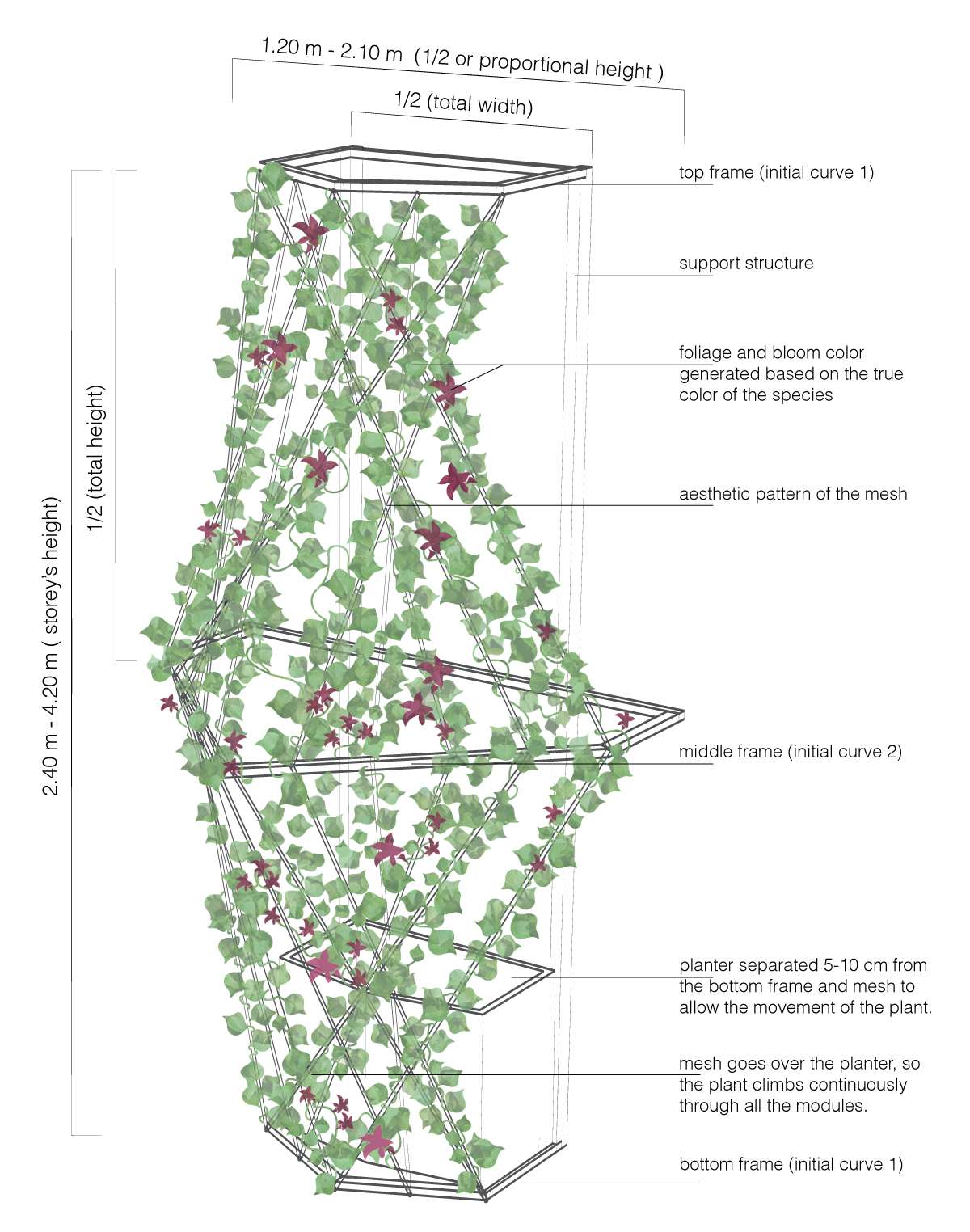
Vegetation as a condition and not as a supportive element, using the environmental aspects of the site, the design and management of the structure that supports the plant, the morphology and the behavior of the plant as parameters that will guide the algorithmic process.
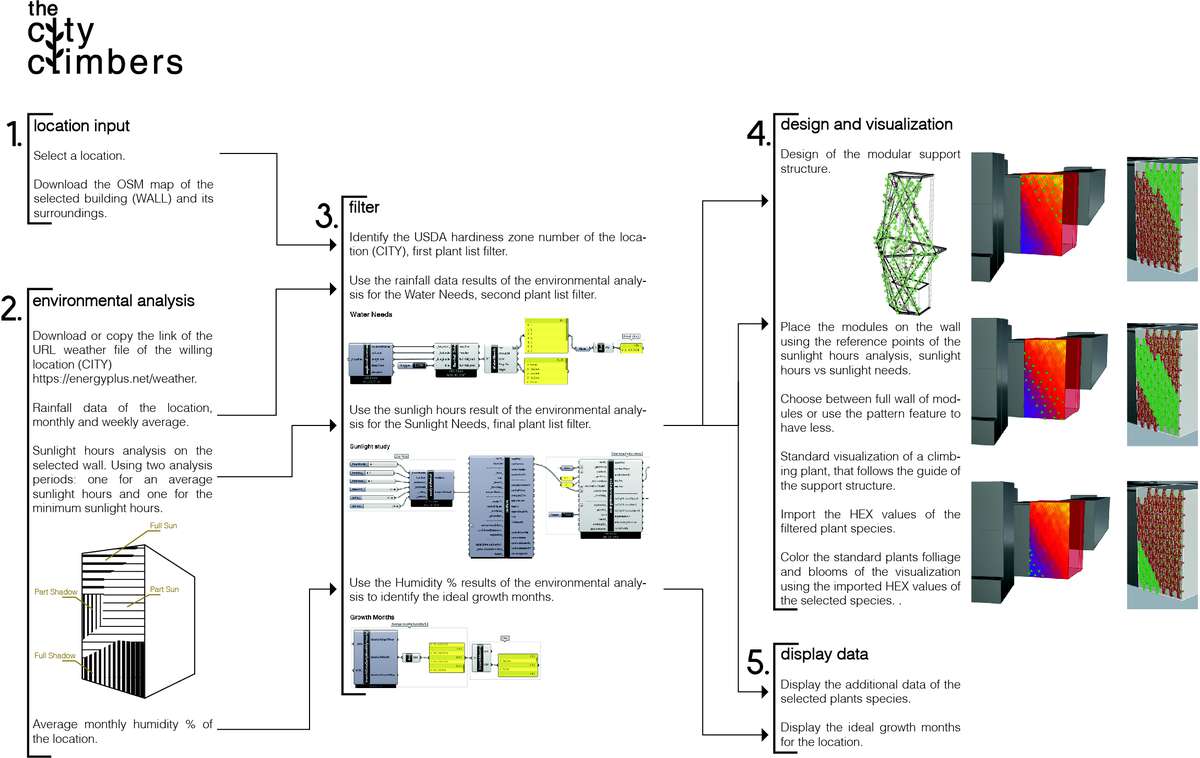
The logic behind the module design is sensitive with the romantic view of gardening as an aesthetic creation but also gives the plant the support that it needs to grow vertically and the user a doable design construction with accessible materials. The aesthetic is parametrically realized and has some controllable features. It is based in two initial curves proportional to each other that can be changed or modified if the adjustments behave with the whole algorithm.
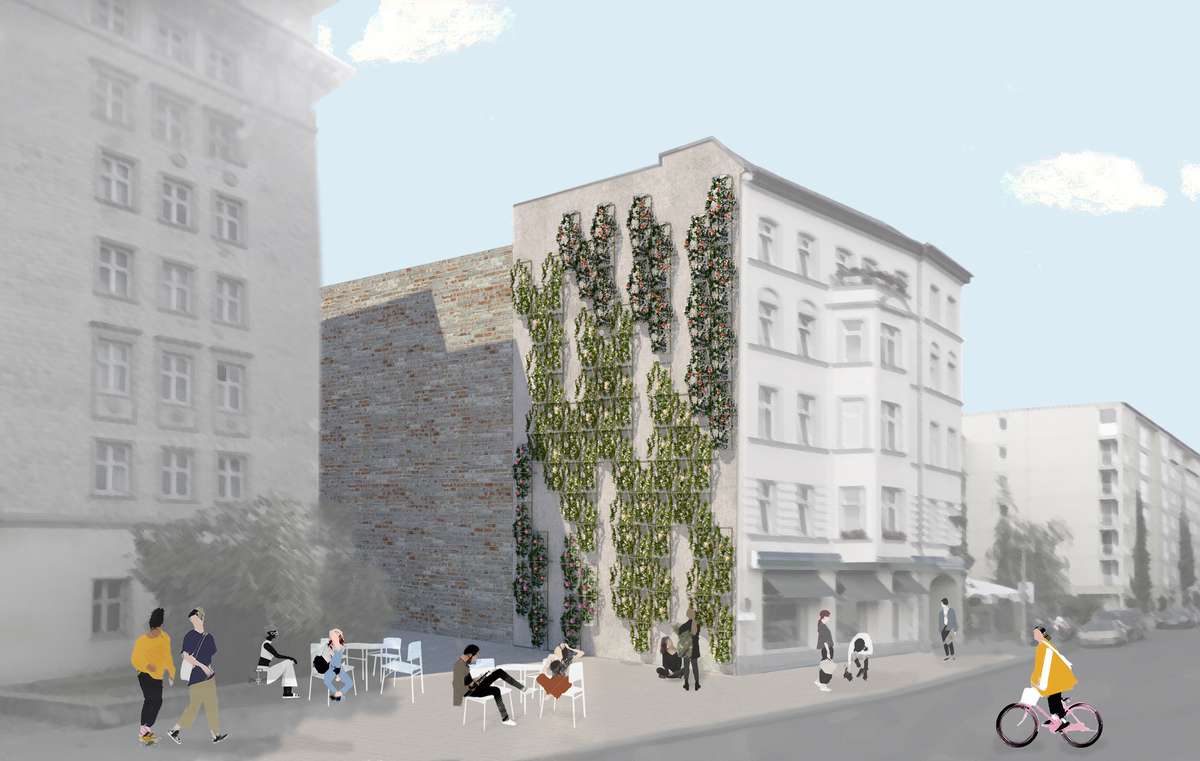
Cities move toward more green practices and the support of a parametric tool for it will define and encode a better relationship between design intent and plant needs.
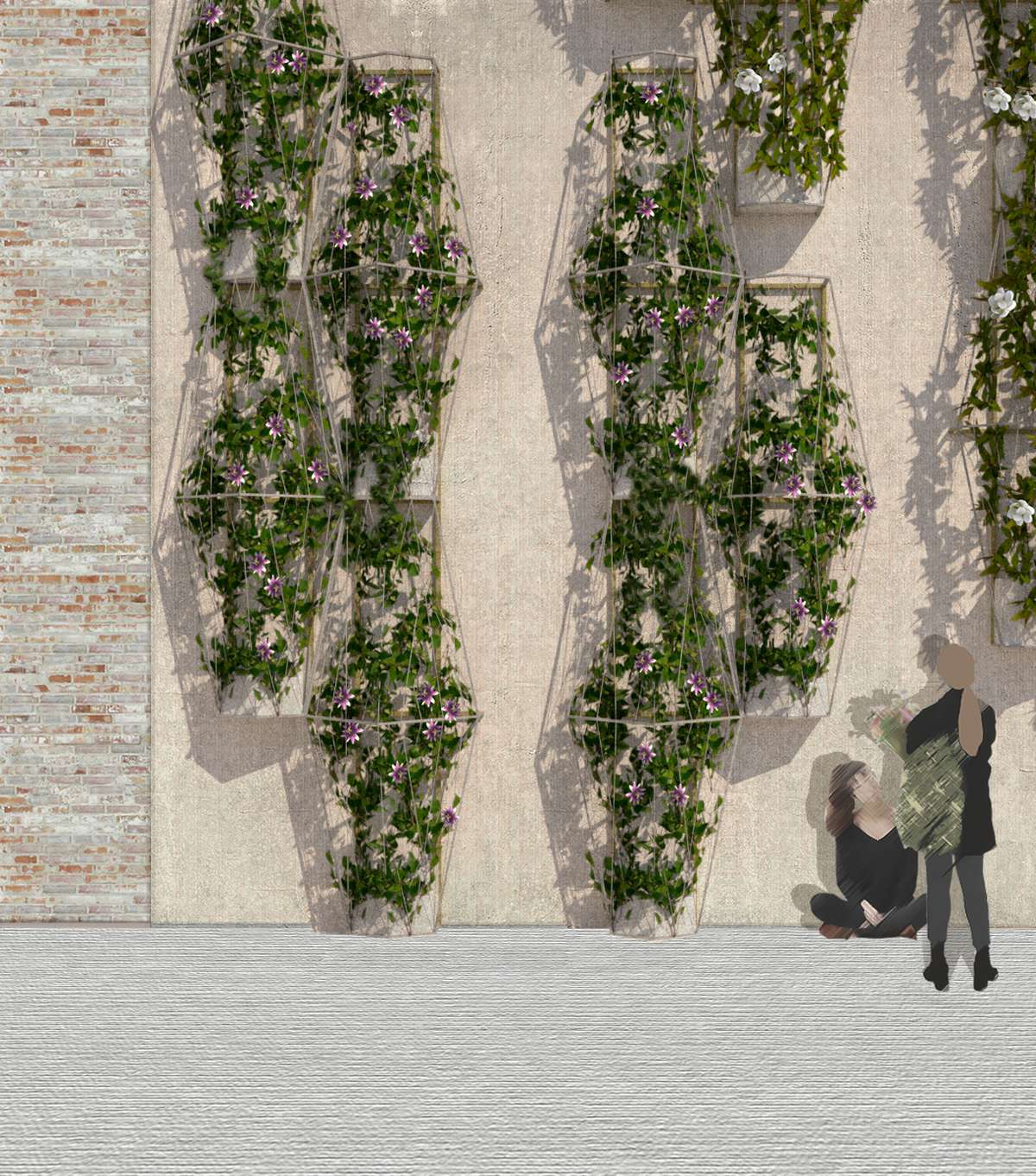
This project explored the aspirations and implications of a plant based (open-source) design. Holding its efforts on the power of technology, especially networked technology, and participation to record, improve and distribute work and data. Nowadays exist different entrepreneurships betting for the democratization of architecture but keeping the gap between designers and clients, that in this case are pro bono clients. I aim to democratize the city scenarios, using this tool to truly awake the
The City Climbers
The City Climbers

- Systemic changes
The proposal is to design a tool, that combined with a plant database of climbers, will create vegetal structures for the city environment. Starting from a location input, the tool will select the most adequate species for the climate conditions based in an environmental analysis of the site, design the supportive structure based on the growing needs of the plants, and make a sunlight analysis of the selected wall. The City Climbers project was born from the awareness of urbanization and its impact on the future landscape of human settlement. Understanding that urbanization is driven by the search of opportunities can imply itself the opportunity to link a latent community that is looking for better living conditions. The idea of a tool that can help the will of improve our city scenario, with a human scale approach and by taking advantages of the benefits of urban vegetation. The tool provides a parametrical design procedure for a yet limited vegetal solution: Green Walls.

Vegetation is deliberately planted in residential and non-residential urban locations for aesthetic, ecological, and functional purposes. This vegetation can provide values such as screening of unsightly vistas, the abatement of noise, and the shading of city streets. Indirectly, planted city vegetation may provide habitat for urban biodiversity and sequestrate urban atmospheric pollutants, including carbon.
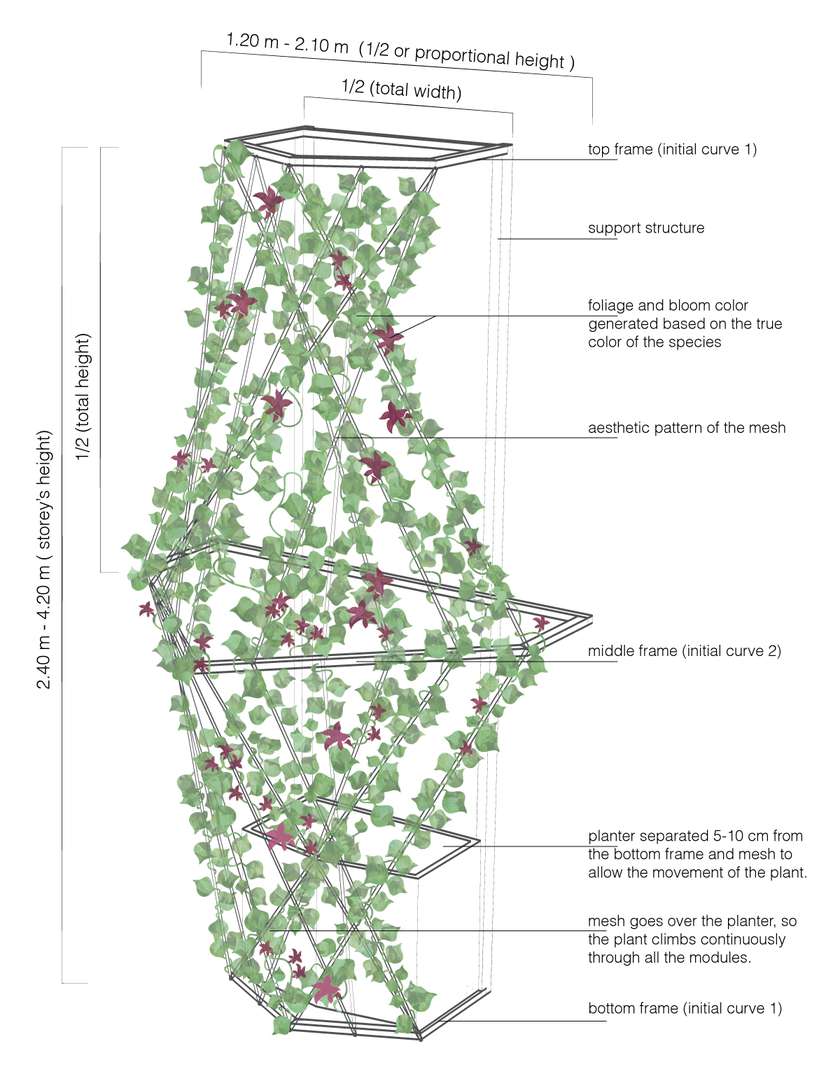
Vegetation as a condition and not as a supportive element, using the environmental aspects of the site, the design and management of the structure that supports the plant, the morphology and the behavior of the plant as parameters that will guide the algorithmic process.
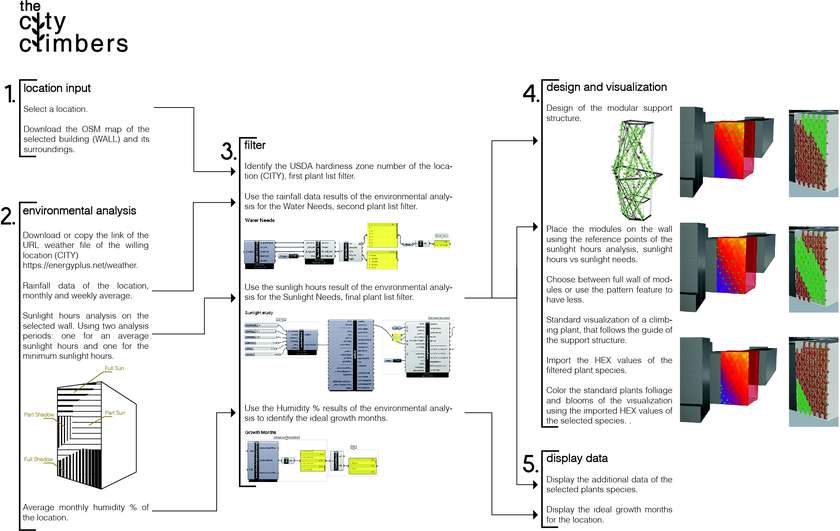
The logic behind the module design is sensitive with the romantic view of gardening as an aesthetic creation but also gives the plant the support that it needs to grow vertically and the user a doable design construction with accessible materials. The aesthetic is parametrically realized and has some controllable features. It is based in two initial curves proportional to each other that can be changed or modified if the adjustments behave with the whole algorithm.
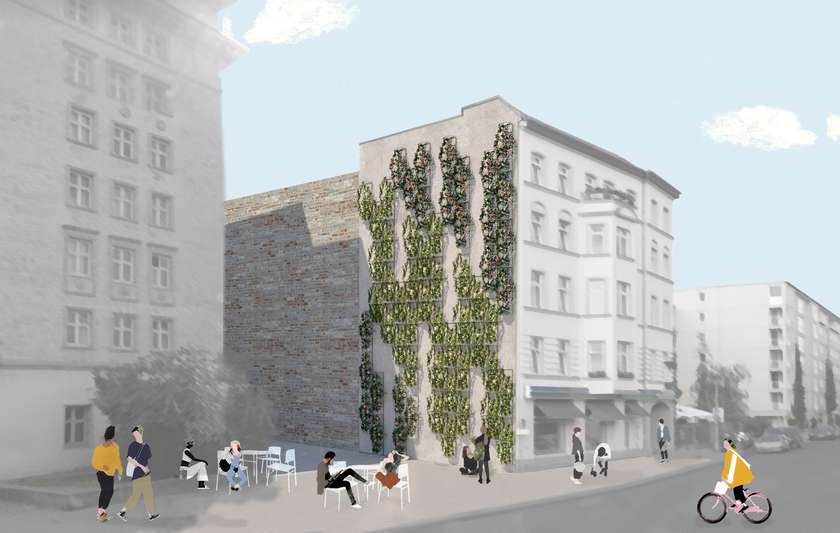
Cities move toward more green practices and the support of a parametric tool for it will define and encode a better relationship between design intent and plant needs.
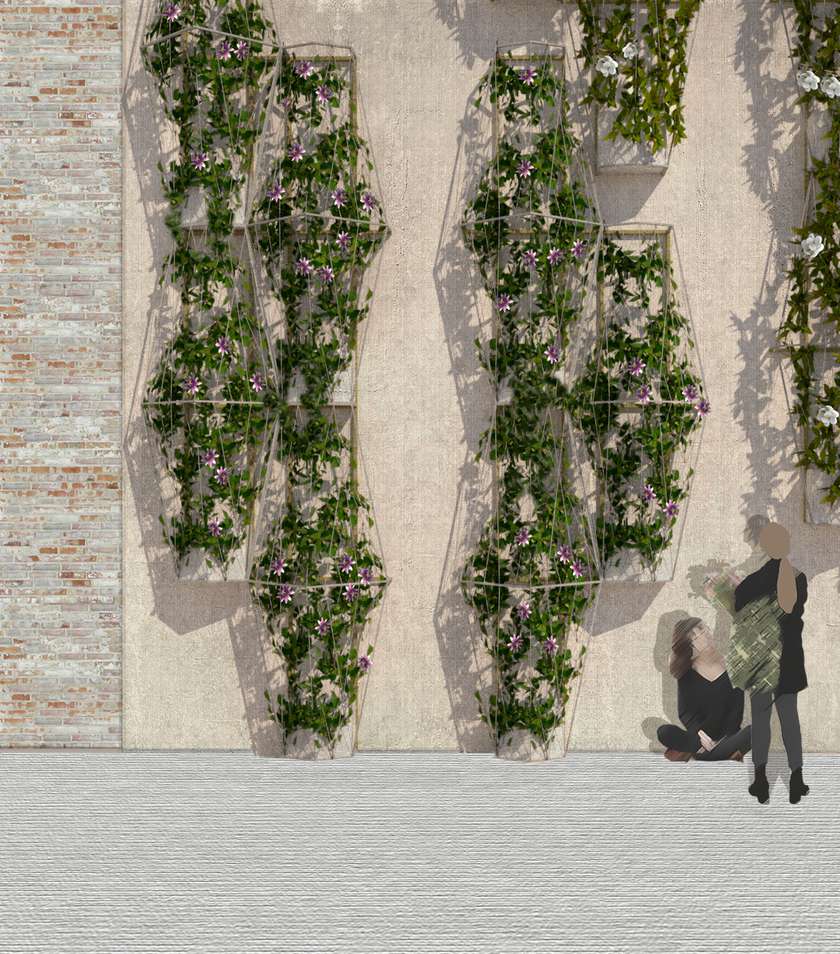
This project explored the aspirations and implications of a plant based (open-source) design. Holding its efforts on the power of technology, especially networked technology, and participation to record, improve and distribute work and data. Nowadays exist different entrepreneurships betting for the democratization of architecture but keeping the gap between designers and clients, that in this case are pro bono clients. I aim to democratize the city scenarios, using this tool to truly awake the